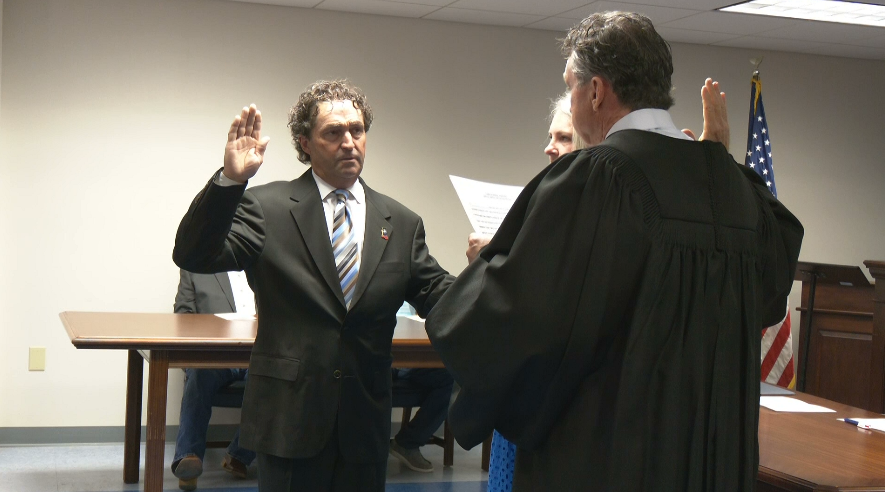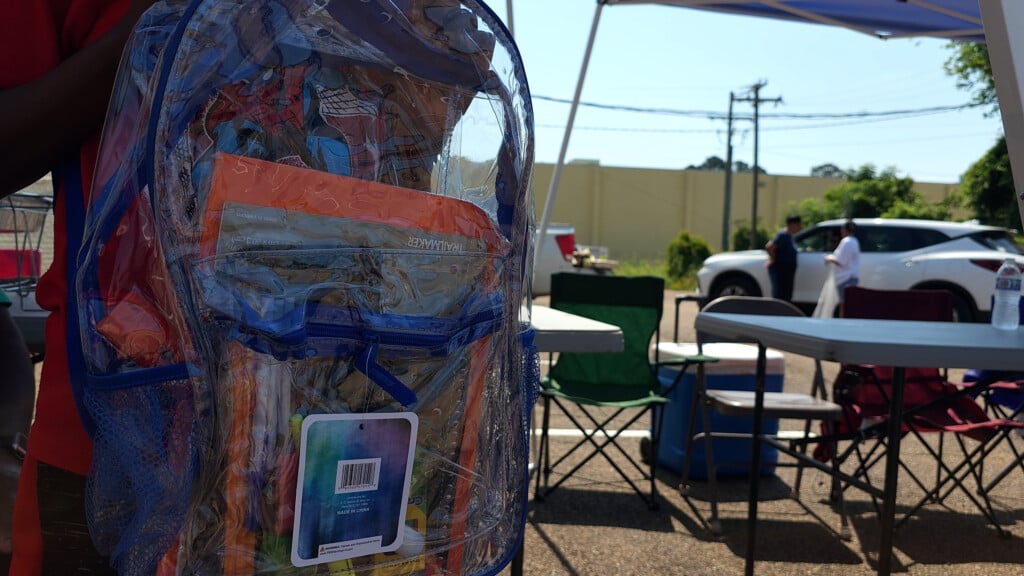Jumping Trapjaw Ant Found in Miss.

Trapjaw ants can snap their extremely large and powerful mandibles together to catch prey or perform a defensive maneuver that allows them to jump inches in the air.
(Photo by MSU Ag Communications/Kat Lawrence)
BY BONNIE COBLENTZ
MSU Ag Communications
STARKVILLE, Miss. — A large, jumping ant has reached large enough numbers that its slow invasion of the Mississippi Gulf Coast is starting to be noticed.
Odontomachus haematodus — native to South America and commonly known as the trapjaw ant — was first identified in the state in August 2000. These large brown ants can reach almost a half-inch long. Trapjaw ants have elongated mandibles for catching prey, and they have a very painful sting.
Joe MacGown, a research technician and scientific illustrator for the Mississippi Agricultural and Forestry Experiment Station, described the ant’s most distinguishing characteristic.
“This species has huge, elongated mandibles that are very powerful,” MacGown said. “These mandibles are attached in the middle of the face, not on the edges as is typical for other ants. They walk around with their mandibles all the way open at 180 degrees, and they can shut them rapidly.
“This movement is supposedly the fastest muscle movement in the animal kingdom, and they can control it very precisely,” he said.
Not surprisingly, trapjaw ants use their mandibles to catch prey, but they also use them for something else entirely, MacGown said.
“Trapjaw ants can snap the tips of their mandibles against something and bounce away,” he said. “This is a defensive bounce that can move them 2 to 3 inches in the air and 5 to 8 inches backwards.”
Trapjaw ants nest in rotted wood and plant debris, such as leaf litter, that accumulates at the bases of trees. They are beginning to take over certain natural environments.
“A lot of the invasive ants in the state tend to nest in disturbed areas like open roadsides and yards and displace our native ants,” MacGown said. “Most invasive ants don’t do well in native settings, but we’re starting to see high numbers of the trapjaw ants in natural wooded habitats.”
MacGown said chemicals commonly used to control other ants have been effective on this new pest as well. Unlike fire ants which form mounds in yards, trapjaw ants are not nuisances in most places. They have not been found in buildings and have not become much of a problem because they tend to nest in out-of-the-way places.
So far, MacGown has found the ants in Jackson and Greene counties in Mississippi, but he first collected them in Baldwin County, Alabama almost 20 years ago. The earliest record he found of them was from unidentified specimens in the Smithsonian National Collection gathered in the mid-1950s from Mobile, Alabama.
“This ant basically went unnoticed for the next 30 to 40 years until large populations built up,” he said. “It is common to have an invasive species come into an area and be there in small numbers for 50 or 60 years, then something shifts, and they build a huge population.”
MacGown was instrumental in correctly identifying this species. He has spent his career studying ants in the Southeast and has done extensive work describing various species so they can be correctly categorized.
“These ants were misidentified for a long time, but we were able to give them a definitive name last year,” he said. “To know if something is new, you have to know every species in the group, and there was a lot of confusion about the taxonomy of this genus in the United States.”
MacGown completed a revision of this ant genus for North America, a comprehensive process that involved making better scientific descriptions of the species for a more accurate listing.
Richard Brown, director of the Mississippi Entomological Museum housed in Mississippi State University’s Clay Lyle Entomology Building, praised MacGown’s work to correctly identify ant species.
“Joe MacGown has become a leading authority on ants of the Southeastern United States,” Brown said. “His publications and findings have drawn the attention of researchers at many other institutions who have come here to work with Joe.”
Visit Ants of the Southeastern United States, the website MacGown developed and maintains at http://bit.ly/1tkLlhL for more information on trapjaw and other ants.





Leave a Reply